Input interpretation

1-butyne
Chemical names and formulas
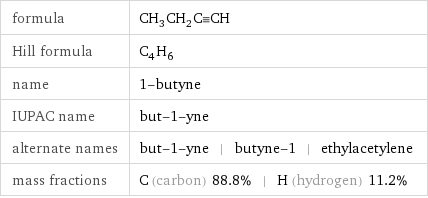
formula | CH_3CH_2C congruent CH Hill formula | C_4H_6 name | 1-butyne IUPAC name | but-1-yne alternate names | but-1-yne | butyne-1 | ethylacetylene mass fractions | C (carbon) 88.8% | H (hydrogen) 11.2%
Lewis structure
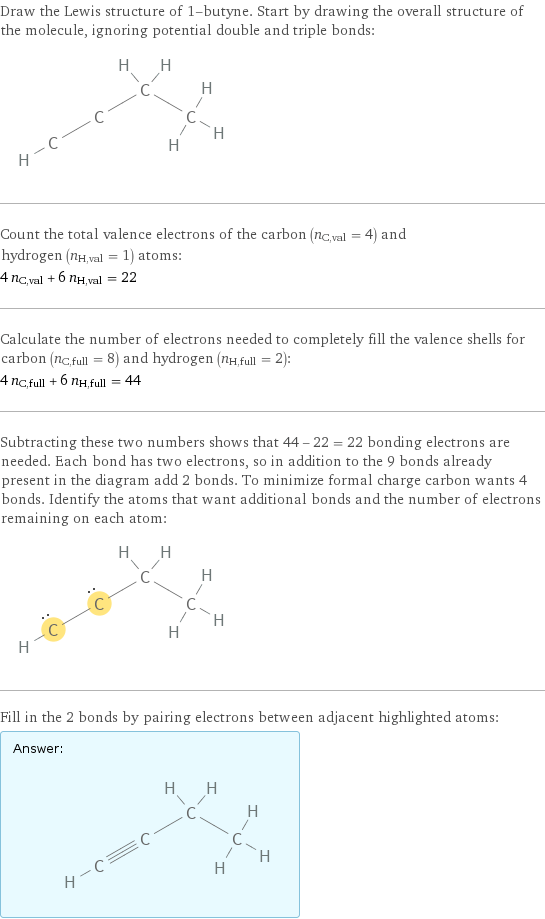
Draw the Lewis structure of 1-butyne. Start by drawing the overall structure of the molecule, ignoring potential double and triple bonds: Count the total valence electrons of the carbon (n_C, val = 4) and hydrogen (n_H, val = 1) atoms: 4 n_C, val + 6 n_H, val = 22 Calculate the number of electrons needed to completely fill the valence shells for carbon (n_C, full = 8) and hydrogen (n_H, full = 2): 4 n_C, full + 6 n_H, full = 44 Subtracting these two numbers shows that 44 - 22 = 22 bonding electrons are needed. Each bond has two electrons, so in addition to the 9 bonds already present in the diagram add 2 bonds. To minimize formal charge carbon wants 4 bonds. Identify the atoms that want additional bonds and the number of electrons remaining on each atom: Fill in the 2 bonds by pairing electrons between adjacent highlighted atoms: Answer: | |
3D structure
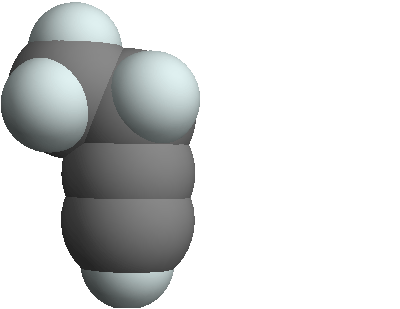
3D structure
Basic properties

molar mass | 54.09 g/mol phase | gas (at STP) melting point | -130 °C boiling point | 8 °C density | 0.669 g/cm^3 (at 0 °C) solubility in water | insoluble
Units

Gas properties (at STP)
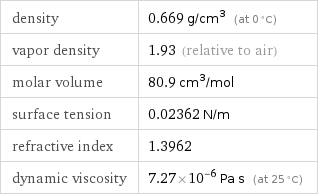
density | 0.669 g/cm^3 (at 0 °C) vapor density | 1.93 (relative to air) molar volume | 80.9 cm^3/mol surface tension | 0.02362 N/m refractive index | 1.3962 dynamic viscosity | 7.27×10^-6 Pa s (at 25 °C)
Units

Thermodynamic properties
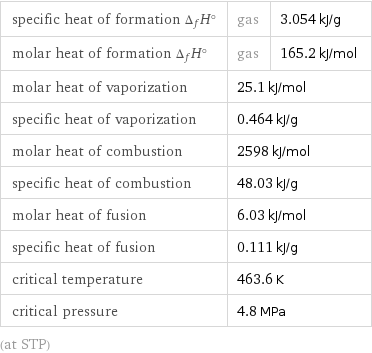
specific heat of formation Δ_fH° | gas | 3.054 kJ/g molar heat of formation Δ_fH° | gas | 165.2 kJ/mol molar heat of vaporization | 25.1 kJ/mol | specific heat of vaporization | 0.464 kJ/g | molar heat of combustion | 2598 kJ/mol | specific heat of combustion | 48.03 kJ/g | molar heat of fusion | 6.03 kJ/mol | specific heat of fusion | 0.111 kJ/g | critical temperature | 463.6 K | critical pressure | 4.8 MPa | (at STP)
Chemical identifiers

CAS number | 107-00-6 PubChem CID number | 7846 PubChem SID number | 24882578 SMILES identifier | CCC#C InChI identifier | InChI=1/C4H6/c1-3-4-2/h1H, 4H2, 2H3 MDL number | MFCD00039944
NFPA label

NFPA label

NFPA health rating | 1 NFPA fire rating | 4 NFPA reactivity rating | 3
Safety properties

flash point | -66 °C lower explosive limit | 2% (concentration in air) upper explosive limit | 32.9% (concentration in air)

DOT hazard class | 2.1 DOT numbers | 2452